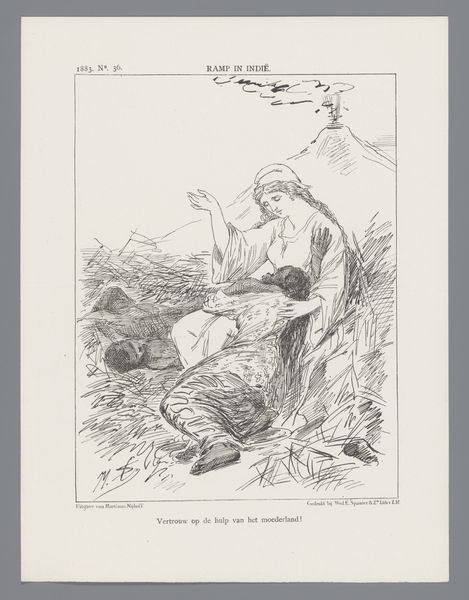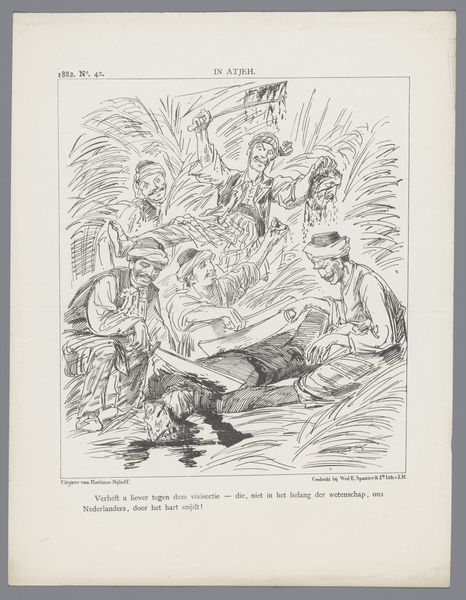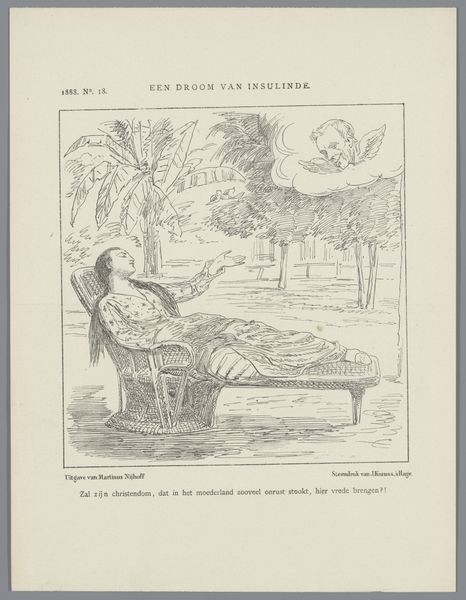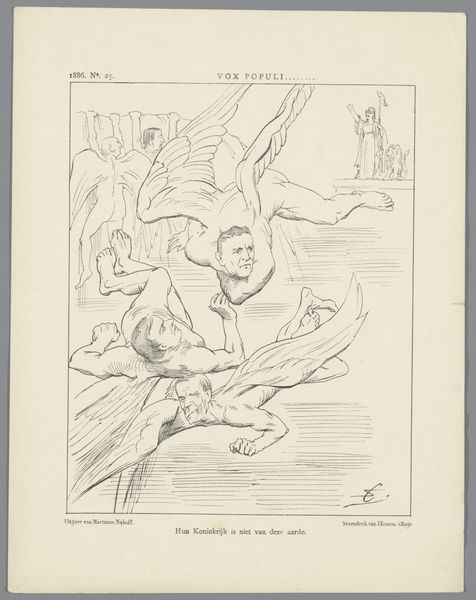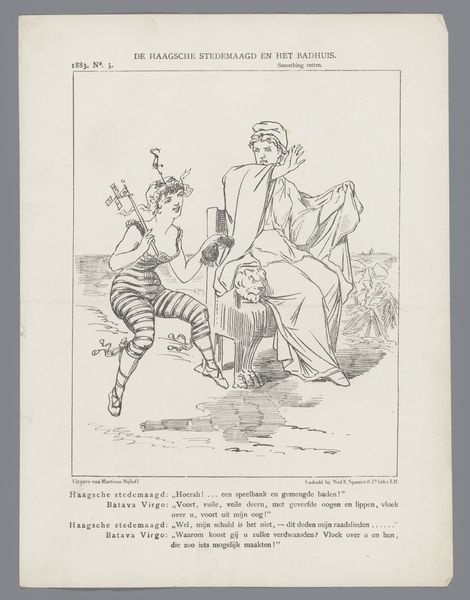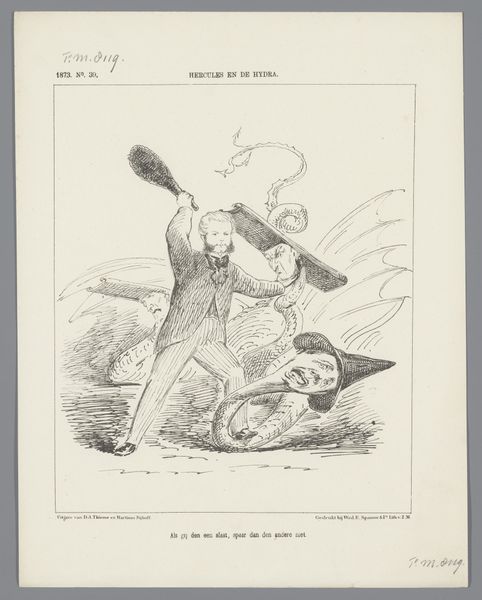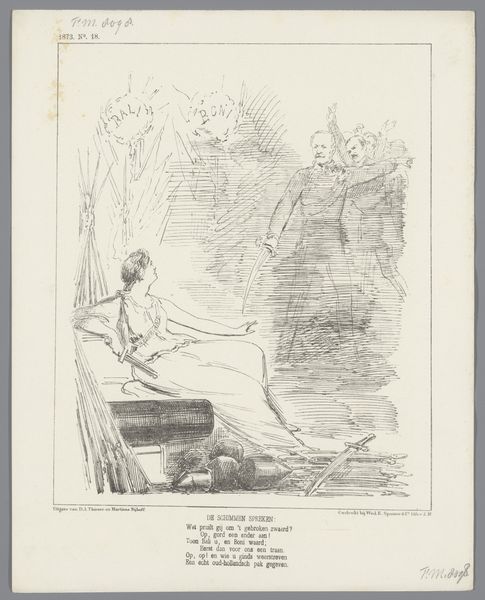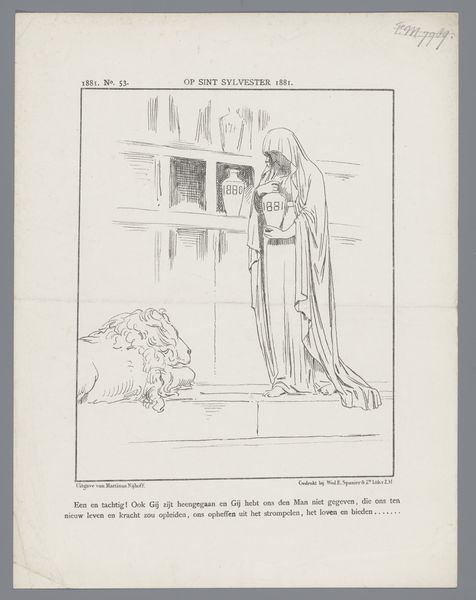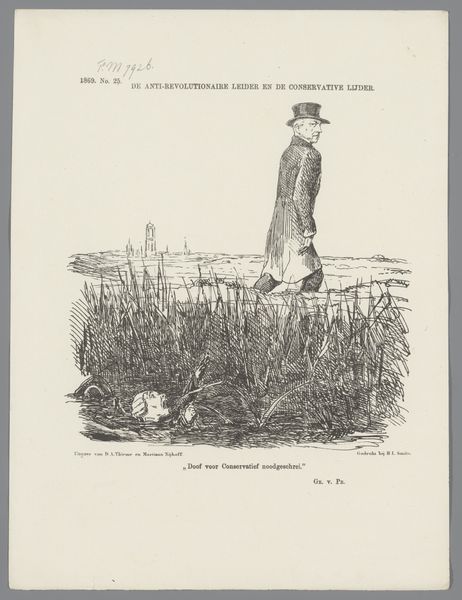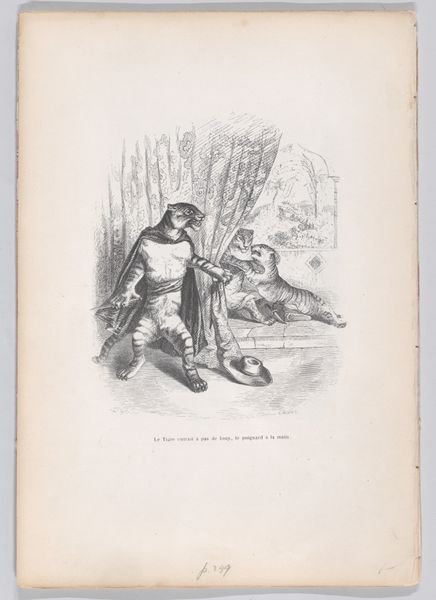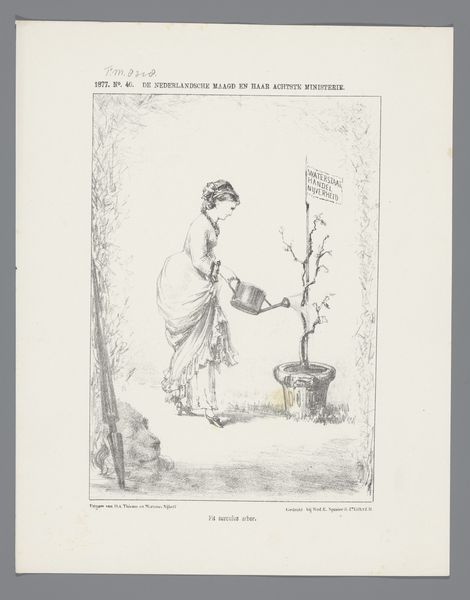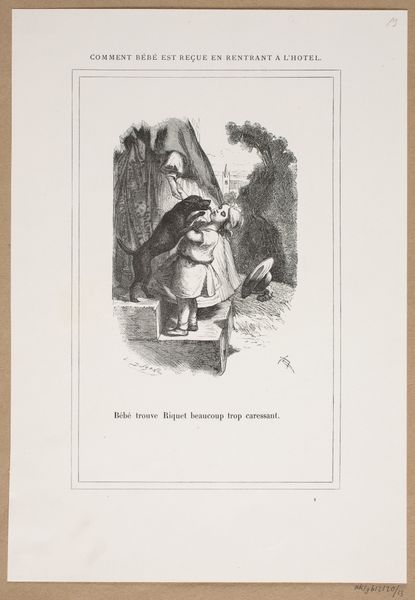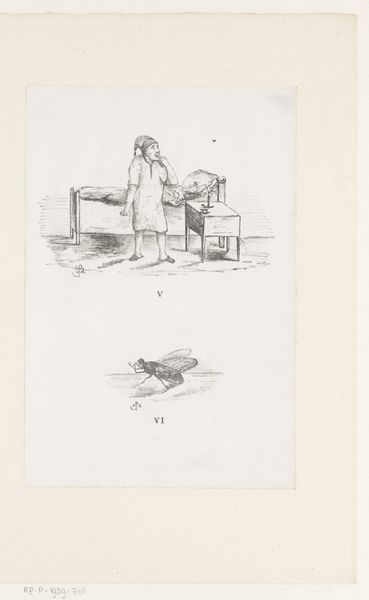
drawing, pen
#
drawing
#
caricature
#
pen
#
genre-painting
#
realism
Dimensions: height 275 mm, width 215 mm
Copyright: Rijks Museum: Open Domain
Curator: Here we have Johan Michaël Schmidt Crans’s “Politieke spotprent, 1882,” created using pen and ink in the realism style. My immediate impression is of constraint; the thick lines almost trap the figures within the reeds. Editor: Constraint is a key observation. As a materialist, I'm struck by the process – the artist's hand, painstakingly applying these marks. What does the inscription at the top, "Grondwetsherziening na Kiesrechtwijziging," suggest? Curator: Ah, that provides important context. The inscription refers to a constitutional amendment concerning electoral reform. The figures, seemingly stranded in the reeds, visually echo that notion of being bogged down, ensnared perhaps, by political stagnation. Editor: And “Met een kluitje in het riet gestuurd,” below… roughly, “sent into the reeds with a small clod of earth." There's a real earthiness here – not just in the imagery but potentially in the implication of agriculture. Was electoral reform tied to land ownership or rural constituencies at the time? Curator: Quite possibly. Consider how the reeds dominate the composition. Their density, achieved through rigorous hatching and cross-hatching, could signify the challenges and obstructions to societal progression, reform represented as a navigation of unruly, almost impassable, natural forces. Editor: The roughness of the pen work further drives that point home, right? No smooth lines here. It feels very of-the-moment, less 'high art' and more 'accessible broadsheet,' suggesting an intention for widespread dissemination among working-class communities who, again, stood to benefit materially from reformed enfranchisement. Curator: I find the ambiguity intriguing, though. Are we witnessing a criticism of inaction or, conversely, a portrayal of a necessary, albeit cumbersome, struggle for advancement? Is the artist celebrating or satirizing political momentum? The form remains suggestive. Editor: A dialectical stalemate perhaps – fitting considering the historical inertia and inherent power struggles underscoring social reforms. Curator: Exactly. Its strength lies in leaving it up to the audience. Editor: Yes. A material reading shows us an instance where tools are employed not just to create 'beauty' but to mobilize opinions and prompt active civic engagement. Food for thought!
Comments
No comments
Be the first to comment and join the conversation on the ultimate creative platform.
